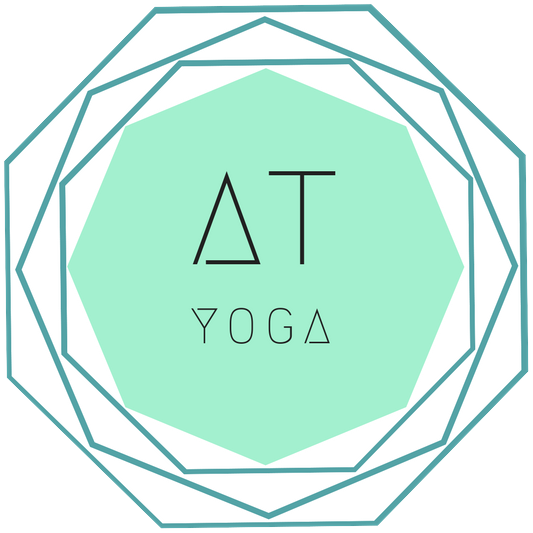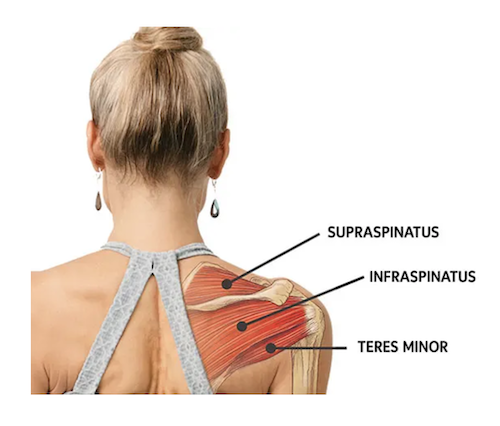
What is the Rotator Cuff?
The Rotator Cuff is made up of 4 distinct muscles and tendons that surround the shoulder joint (cuff) , keeping the head of your upper arm bone firmly within the shallow socket of the shoulder. It also helps you raise and rotate your arm. It provides strength and stability during movement of the arms, and protects your shoulder joint. It is especially important in sports like swimming, or tennis.
They are essential players in almost every type of shoulder movement. Balanced strength and flexibility in each of the four muscles are vital to maintain functioning of the entire shoulder girdle.
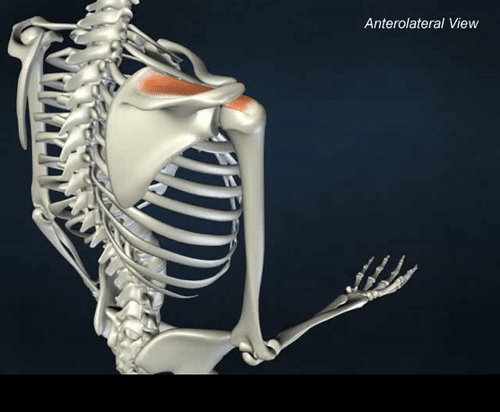
Supraspinatus
This holds your humerus in place and keeps your upper arm stable. And helps lift your arm out to the side (abduction)
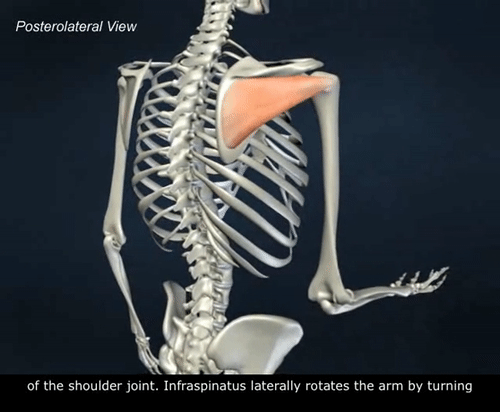
Infraspinatus
This is the main muscle responsible for external rotation of your arm away from the centerline of your body.. It’s a thick triangular muscle. It covers the back of your shoulder blade deep below the skin and close to the bone.
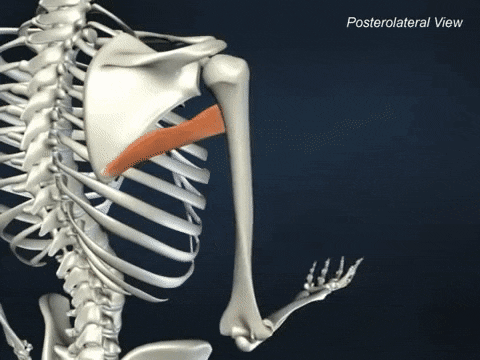
Teres Minor
This is the smallest rotator cuff muscle, a narrow muscle on the back of your shoulder blade just below the infraspinatus. It also contributes to lateral (external) rotation of your arm.
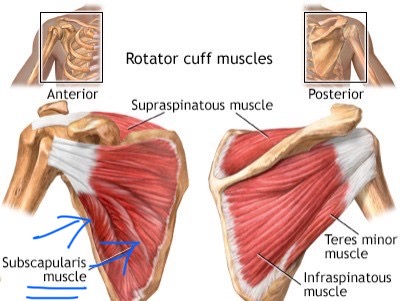
Subscapularis
This is a large triangular-shaped muscle that lies below the other three other muscles. It’s the strongest, largest, and most used of the four rotator cuff muscles. It participates in most shoulder motions but is especially important for rotation of your arm toward the midline of your body (internal rotation). Unlike the other three muscles, the subscapularis attaches to the front, not the back, of the scapula (shoulder blade).
Rotator Cuff Injuries
Rotator cuff injuries are common and increase with age. There are certain motions and activities that increase your likelihood of suffering a rotator cuff injury. These include:
- Performing overhead tasks
- Repetitive stress to your shoulder joint, as in throwing and racquet sports
- Contact sports
- Sitting with a rounded shoulder posture
- Failing to maintain general physical fitness
Working to maintain healthy joints, avoiding overhead and repetitive strain on your shoulders, and maintaining proper posture can help you avoid painful shoulder injuries.
Symptoms
The pain associated with a rotator cuff injury may:
- Be described as a dull ache deep in the shoulder, which often worsens with use of the arm away from the body
- Disturb sleep
- Make it difficult to comb your hair or reach behind your back
- Be accompanied by arm weakness
Most people exercise the front muscles of the chest, shoulder and upper arm, but it is equally important to strengthen the muscles in the back of the shoulder and around the shoulder blade to optimize shoulder muscle balance.
